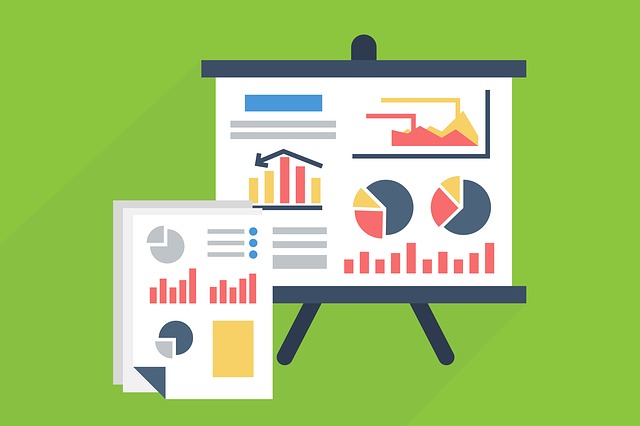Discover the delightful dance of data-driven decision-making with the powerful prowess of email analytics and reporting. In today’s digital age, where marketing strategies are constantly evolving, it is essential to harness the potential of every tool at your disposal.
By incorporating email analytics into your marketing strategy, you can unlock a treasure trove of insights to optimize your campaigns and drive remarkable results. With email analytics, you can track and analyze open rates, click-through rates, and engagement metrics, providing you with a comprehensive understanding of your audience’s preferences and behaviors.
By segmenting your email list and conducting A/B tests, you can tailor your content and subject lines to captivate your subscribers and boost engagement. Moreover, email analytics allows you to optimize send times, ensuring your messages reach your audience at the most opportune moment.
But the true measure of success lies in conversion rates and return on investment (ROI). With email analytics and reporting, you can evaluate the effectiveness of your campaigns and make data-backed decisions that lead to tangible results.
So, embrace the power of email analytics and reporting and elevate your marketing strategy to new heights of success.
Key Takeaways
- Email analytics provide valuable insights into open rates, click-through rates, and engagement metrics.
- Segmenting email lists and personalization techniques enhance targeting and improve engagement and conversion rates.
- A/B testing subject lines, content, and design elements can significantly improve email campaign performance.
- Analyzing conversion rates and ROI is crucial for optimizing campaign elements and enhancing customer retention.
Track and Analyze Email Open Rates
You can easily monitor and analyze your email open rates, giving you a clear picture of how many people are actually opening your emails and engaging with your content. By keeping track of open rates, you can gauge the effectiveness of your email personalization and ensure that your emails are being delivered to the intended recipients.
This data-driven approach allows you to make data-backed decisions to improve your email deliverability and enhance your overall marketing strategy. By understanding which subject lines, send times, and content resonate with your audience, you can optimize your email campaigns for better engagement.
Once you have a solid grasp on your open rates, you can transition into monitoring click-through rates and engagement metrics, which will provide further insights into how your audience is interacting with your emails.
Monitor Click-Through Rates and Engagement Metrics
Imagine receiving an email that not only grabs your attention but also entices you to click through and explore the offer further. By monitoring click-through rates and engagement metrics, you can gain valuable insights into the effectiveness of your email marketing strategy.
Here are three ways email analytics and reporting can help improve your marketing efforts:
-
Measure subscriber retention: Analyzing click-through rates allows you to determine how engaged your subscribers are with your content. High click-through rates indicate that your emails are resonating with your audience and keeping them interested in your offerings.
-
Analyze email deliverability rates: Monitoring engagement metrics helps you identify any deliverability issues. Low engagement rates may indicate that your emails are not reaching your subscribers’ inboxes, and you can take steps to improve your email deliverability rates.
-
Gain actionable insights: By tracking click-through rates and engagement metrics, you can identify which emails and campaigns are performing well and which ones need improvement. This data-driven approach allows you to make informed decisions and optimize your marketing strategy for better results.
Transitioning into the subsequent section about ‘segment your email list for targeted campaigns’, you can further enhance your email marketing performance by utilizing segmentation techniques.
Segment Your Email List for Targeted Campaigns
By segmenting your email list, you can create targeted campaigns that reach specific groups of subscribers, resulting in higher engagement and conversion rates. Personalization strategies and email automation techniques allow you to divide your audience based on demographics, interests, purchasing behavior, or any other relevant criteria.
This level of segmentation allows you to deliver highly relevant content to each group, increasing the chances of capturing their attention and driving them to take action. For example, you can send personalized recommendations to customers who’ve previously made purchases, or offer exclusive promotions to subscribers who’ve shown interest in a particular product category.
By tailoring your messages to different segments of your audience, you can maximize the effectiveness of your marketing efforts.
Transitioning into the next section, A/B testing your email subject lines and content allows you to further optimize your campaigns.
A/B Test Your Email Subject Lines and Content
Optimize your campaigns by A/B testing your email subject lines and content, allowing you to refine and improve your messaging to capture your audience’s attention.
Here’s how A/B testing can help you achieve better results:
-
Email personalization: Test different subject lines and content variations to see which resonates better with your audience. By tailoring your emails to their preferences and interests, you can increase open and click-through rates.
-
Email design optimization: Experiment with different email designs, layouts, and visuals to determine what grabs your audience’s attention and encourages them to take action. Test different fonts, colors, and images to create visually appealing emails that stand out in their inbox.
-
Data-driven decision making: A/B testing provides you with valuable insights into what works and what doesn’t. Analyzing the results of your tests allows you to make data-driven decisions and continuously improve your email marketing strategy.
By leveraging email analytics and reporting, you can optimize your send times to ensure your messages reach your audience when they’re most likely to engage.
Use Email Analytics to Optimize Send Times
Maximize the effectiveness of your email campaigns by strategically analyzing data to determine the optimal times to send your messages for maximum engagement. Understand customer preferences by analyzing email deliverability metrics, such as open rates and click-through rates, to gain insights into when your audience is most likely to interact with your emails.
By tracking and analyzing this data, you can identify patterns and trends that will help you optimize your send times. For example, if you notice that your open rates are higher in the morning, you can schedule your email sends accordingly. By sending your emails at the right time, you can increase the chances of your messages being read and acted upon, ultimately improving the success of your marketing strategy.
Transitioning into the next section, measuring conversion rates and ROI allows you to further refine your email marketing efforts.
Measure Conversion Rates and ROI
Achieving high conversion rates and a strong return on investment is the key to unlocking the true potential of your email campaigns. To increase revenue and improve customer retention, it’s crucial to measure conversion rates and ROI.
Here’s how email analytics and reporting can help you achieve these goals:
-
Identify high-performing campaigns: By analyzing conversion rates, you can determine which campaigns are resonating with your audience and driving the most conversions. This allows you to focus your efforts on the strategies that yield the best results.
-
Optimize campaign elements: Email analytics provide valuable insights into the effectiveness of different elements, such as subject lines, call-to-action buttons, and content. By testing and refining these elements based on data, you can increase conversion rates and improve ROI.
-
Track customer journey: Email analytics allow you to track the entire customer journey, from the initial email open to the final conversion. This helps you understand how different touchpoints impact conversion rates, enabling you to optimize your marketing strategy accordingly.
By leveraging email analytics and reporting, you can make data-driven decisions that enhance your email campaigns, increase revenue, and improve customer retention.
Frequently Asked Questions
How can email analytics and reporting help improve customer retention?
By utilizing email analytics and reporting, you can enhance customer retention significantly.
By analyzing customer feedback data, you can gain valuable insights into their preferences and behaviors. This data allows you to create personalized content that resonates with your customers, increasing their engagement and loyalty.
With a data-driven approach, you can track the effectiveness of your email campaigns, identify areas for improvement, and optimize your marketing strategy to better meet your customers’ needs.
What are some common challenges faced when tracking and analyzing email open rates?
Tracking and analyzing email open rates can present some common challenges. One of the main obstacles is ensuring tracking accuracy, as not all email clients and devices report open rates consistently.
Another challenge lies in interpreting the data accurately. With numerous factors influencing open rates, it’s crucial to understand the context behind the numbers.
By overcoming these hurdles, you can gain valuable insights into your email marketing performance and make data-driven decisions to optimize your strategy.
How can segmenting an email list improve the effectiveness of targeted campaigns?
Segmenting an email list can greatly improve the effectiveness of targeted campaigns by allowing you to tailor your messages to specific groups of subscribers. By dividing your list based on demographics, interests, or behaviors, you can deliver personalized content that resonates with each segment.
This leads to higher engagement, increased conversions, and better overall ROI. Segmentation benefits include improved deliverability, higher open and click-through rates, and more relevant communication with your audience, resulting in a more successful marketing strategy.
What are some best practices for conducting A/B testing on email subject lines and content?
To conduct effective A/B testing on email subject lines and content, start by personalizing your emails. Tailoring your messaging to specific segments ensures relevance and engagement.
Additionally, don’t underestimate the importance of email design. A well-designed email can capture attention and improve click-through rates.
Experiment with different subject lines and content variations to see what resonates best with your audience. Remember, every small tweak can lead to significant improvements in open rates and conversions.
How can email analytics help identify opportunities to optimize send times for better engagement?
To optimize your email send times for better engagement, email analytics is crucial. By tracking click-through rates and analyzing data, you can identify patterns and trends in recipient behavior.
This data-driven approach allows you to determine the optimal time to send your emails for maximum engagement. Optimizing content alone is not enough; understanding when your audience is most likely to open and interact with your emails is key to driving better results and ultimately improving your marketing strategy.
Conclusion
In conclusion, email analytics and reporting are powerful tools that can significantly enhance your marketing strategy.
By tracking open rates and click-through rates, you gain insights into what resonates with your audience.
Segmenting your email list allows for personalized and targeted campaigns, increasing engagement.
A/B testing subject lines and content helps you refine your messaging for maximum impact.
Optimizing send times based on analytics can boost your reach.
Ultimately, measuring conversion rates and ROI provides tangible evidence of your campaign’s success.
Incorporating these strategies will skyrocket your email marketing results, catapulting your business to new heights.







